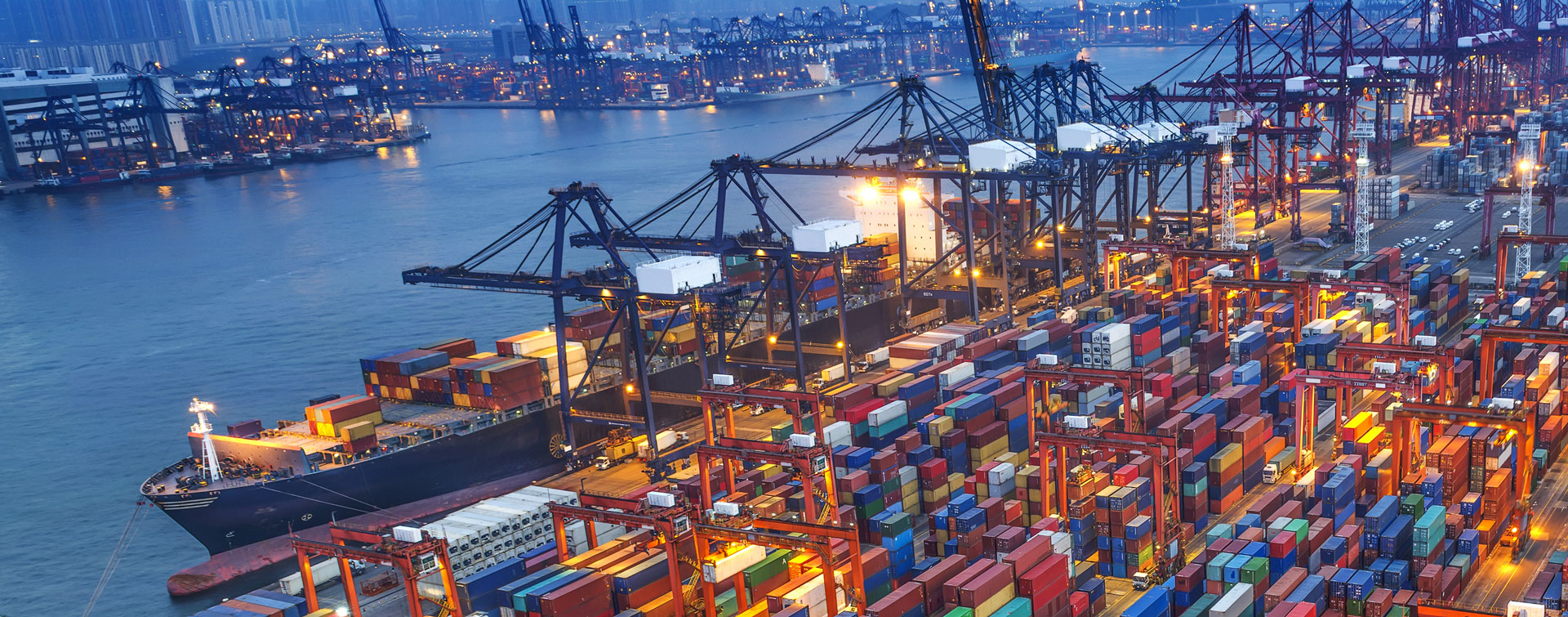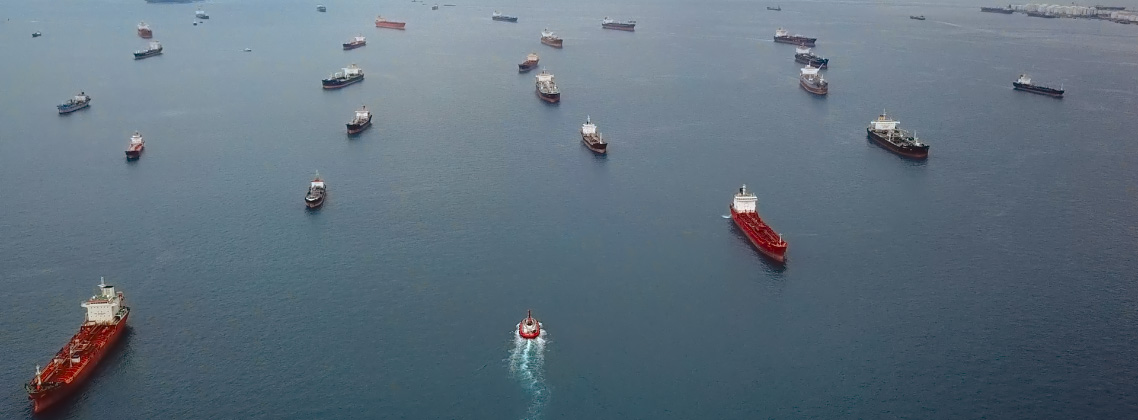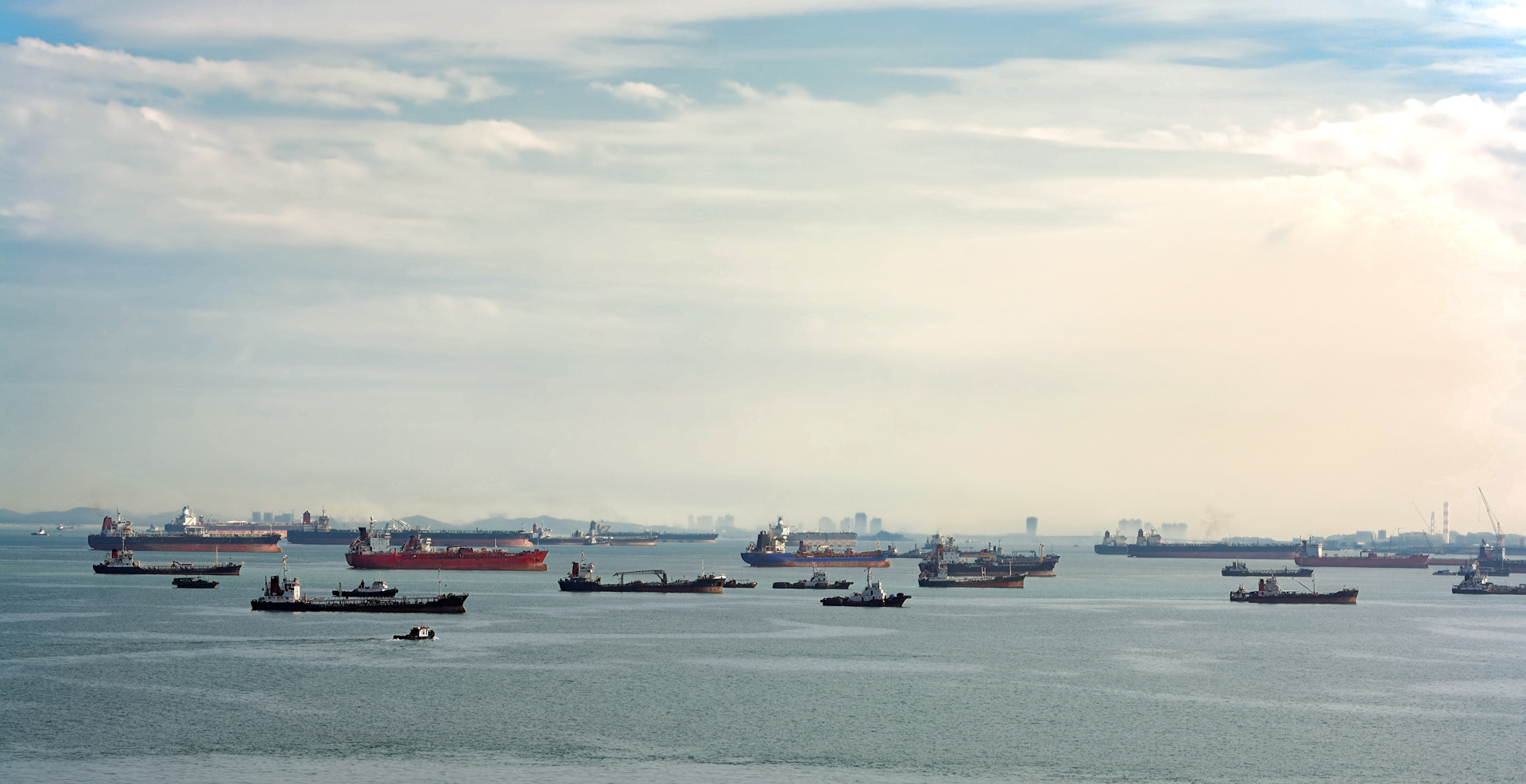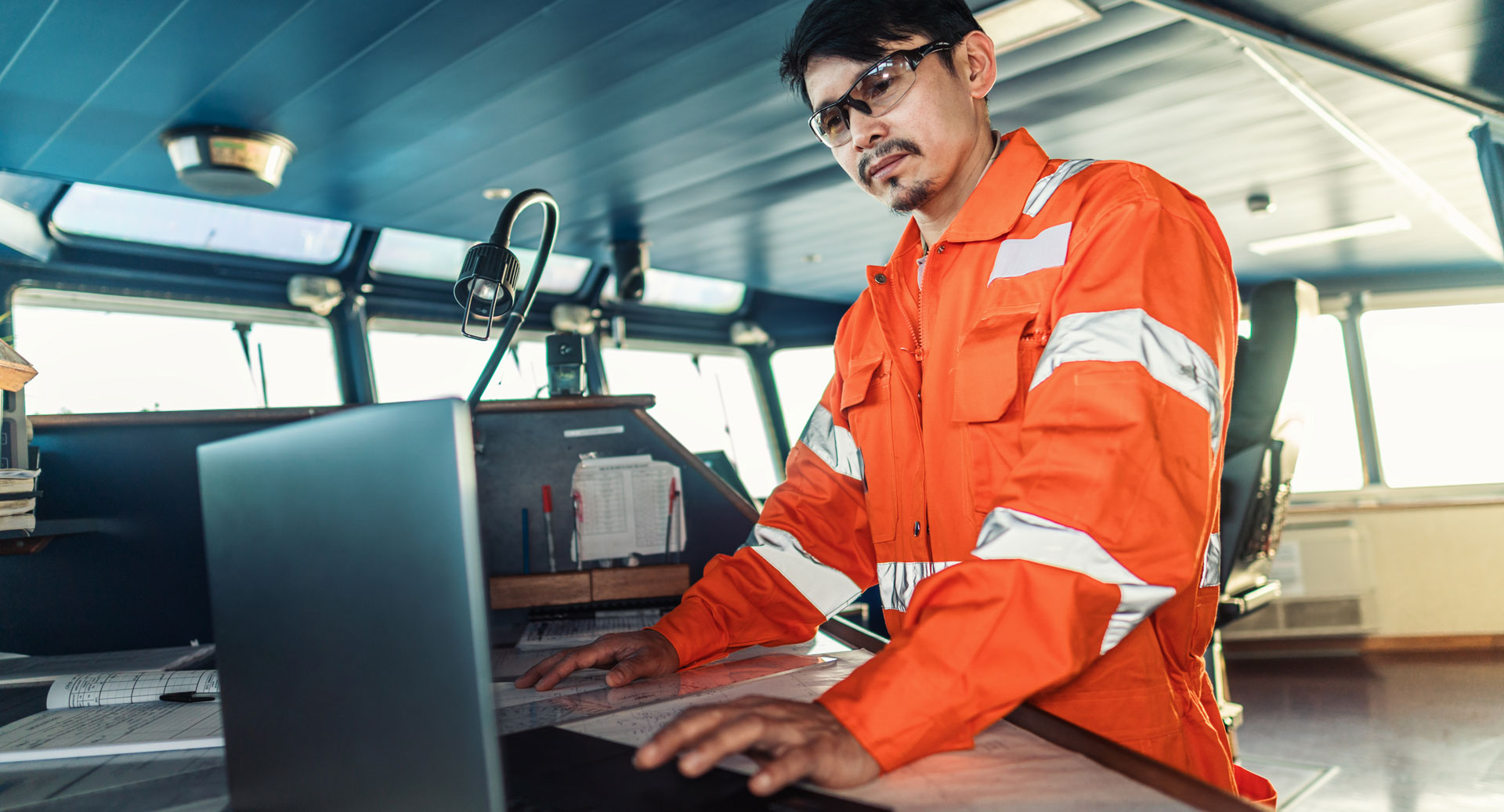Seamless ship-to-shore connections

Just-In-Time arrivals simulation results at Port of Rotterdam showed a whole 23% decrease in fuel consumption, which also translates into a huge emission reduction.
Source: Port of Rotterdam
A connected ecosystem to receive consistently formatted uplinked updates from the ship to shore, and vice-versa, paints the latest and most complete picture for decision-making.
As soon as it becomes clear that the port will not be ready to receive a vessel at the original Estimated Time of Arrival (ETA), the Navi-Port system communicates an updated ETA to the ship’s navigation system. So, rather than spending long hauls at anchorage, ships adjust to the new ETA by slowing down their speed. The difference: the extra voyage time at a reduced speed decreases fuel consumption, cuts down congestion at ports and anchorages, and lowers local emissions.
Communication works both ways
If the ship is behind schedule, Navi-Port updates the onshore systems so that the port communities can better organise their operations.
When the ships and the shore have better coordination and vessels arrive as per schedule, the whole hinterland logistics gets automatically streamlined.
Glimpses of JIT in action was already seen this year in June when W rtsil and Tanger-Med Port enabled the first-ever digital port call for a Hapag-Lloyd vessel. The system exchanged the required time of arrival digitally with the onboard navigation system and allowed the ship’s speed schedule to be adjusted for a Just-in-Time (JIT) arrival by the clicking of one button, thereby saving fuel and costly waiting time at anchor.
With such better ship-to-shore coordination, vessels can immediately cut up to 15% of excess fuel consumption that is currently burnt due to long anchorage, which automatically means a significant reduction in both local and on-route emissions. In fact, an IMO-led Global Industry Alliance simulation study at the Port of Rotterdam shows that Just-In-Time arrivals at Europe’s largest port led to a whole 23% decrease in fuel consumption, which also translates into a huge emission reduction.

Smarter inland connections
Congestion issues in the supply chain go beyond port calls, which Just-intime sailing alone can’t resolve. One other major bottleneck behind all this congestion is inefficient intra-port container movements.
Even if ship-and-shore are as well coordinated as the aviation industry, if the unloading and freight-forwarding channels down the stream are not efficient, eventually the container stack will again start piling up again.





